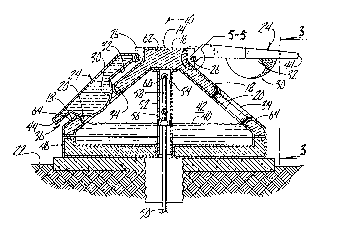Some of the information on this Web page has been provided by external sources. The Government of Canada is not responsible for the accuracy, reliability or currency of the information supplied by external sources. Users wishing to rely upon this information should consult directly with the source of the information. Content provided by external sources is not subject to official languages, privacy and accessibility requirements.
Any discrepancies in the text and image of the Claims and Abstract are due to differing posting times. Text of the Claims and Abstract are posted:
| (12) Patent: | (11) CA 1291380 |
|---|---|
| (21) Application Number: | 1291380 |
| (54) English Title: | LIVESTOCK WATERER |
| (54) French Title: | ABREUOIR POUR BESTIAUX |
| Status: | Expired and beyond the Period of Reversal |
| (51) International Patent Classification (IPC): |
|
|---|---|
| (72) Inventors : |
|
| (73) Owners : |
|
| (71) Applicants : |
|
| (74) Agent: | SMART & BIGGAR LP |
| (74) Associate agent: | |
| (45) Issued: | 1991-10-29 |
| (22) Filed Date: | 1987-11-13 |
| Availability of licence: | N/A |
| Dedicated to the Public: | N/A |
| (25) Language of filing: | English |
| Patent Cooperation Treaty (PCT): | No |
|---|
| (30) Application Priority Data: | ||||||
|---|---|---|---|---|---|---|
|
ABSTRACT OF THE DISCLOSURE
The hog waterer of this invention includes a center top
wall portion with downwardly and oppositely extending wall
portions. A pair of lids are pivoted to the center portion
for closing an access opening in each of the sloping wall
portions. The bottom face of the lid includes a downwardly
extending tapered semi-cylindrical closure member which due
to a loose pivot connection is self-centering in the access
opening. The diameter of the closure member is sufficiently
large to space the lid from the sloping top wall portion to
prevent and ice build up on the sloping top wall portion
from interfering with the closure member from sealing the
water in the reservoir tank from the cold outside atmosphere.
Note: Claims are shown in the official language in which they were submitted.
Note: Descriptions are shown in the official language in which they were submitted.

2024-08-01:As part of the Next Generation Patents (NGP) transition, the Canadian Patents Database (CPD) now contains a more detailed Event History, which replicates the Event Log of our new back-office solution.
Please note that "Inactive:" events refers to events no longer in use in our new back-office solution.
For a clearer understanding of the status of the application/patent presented on this page, the site Disclaimer , as well as the definitions for Patent , Event History , Maintenance Fee and Payment History should be consulted.
| Description | Date |
|---|---|
| Inactive: IPC from MCD | 2006-03-11 |
| Time Limit for Reversal Expired | 2003-10-29 |
| Letter Sent | 2002-10-29 |
| Grant by Issuance | 1991-10-29 |
There is no abandonment history.
| Fee Type | Anniversary Year | Due Date | Paid Date |
|---|---|---|---|
| MF (category 1, 6th anniv.) - small | 1997-10-29 | 1997-10-03 | |
| Reversal of deemed expiry | 1998-10-29 | 1997-10-03 | |
| Reversal of deemed expiry | 1998-10-29 | 1998-09-18 | |
| MF (category 1, 7th anniv.) - small | 1998-10-29 | 1998-09-18 | |
| MF (category 1, 8th anniv.) - small | 1999-10-29 | 1999-10-25 | |
| MF (category 1, 9th anniv.) - small | 2000-10-30 | 2000-09-25 | |
| MF (category 1, 10th anniv.) - small | 2001-10-29 | 2001-09-18 |
Note: Records showing the ownership history in alphabetical order.
| Current Owners on Record |
|---|
| AHRENS AGRICULTURAL INDUSTRIES CO. |
| Past Owners on Record |
|---|
| CLAUDE W. AHRENS |